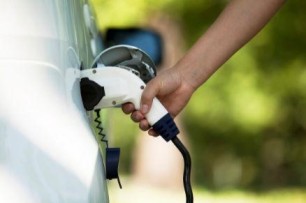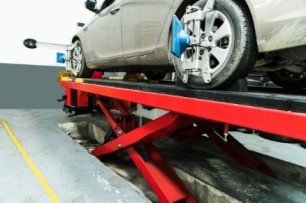General Insurance Blogs, Articles & Updates by - Magma HDI
Have us call you
- RENEW YOUR POLICY
- BUY NEW POLICY

Porting your health insurance policy cannot get simpler
With age, one has to adapt to the evolving environment and take on complex roles as a contributor to the growth of society, the workplace, and the family. This additional responsibility within the settings of your home usually translates into the natural reversal of roles where you begin to take charge of duties that your parents once undertook. This includes financial responsibilities such as future-proofing wealth, preparing for contingencies, and planning for your future needs.
When considering ageing parents, one of the priorities to manage is their health and well-being. Despite carefully purchasing the best health insurance in India for parents, you may find yourself in a dilemma after a short while. As their immunity weakens, they may need coverage that may require additional premium payment or porting of the policy to reap better value from a different insurer provides. However, you do not wish to lose out on the NCB and the accumulated benefits of retaining the policy.
If you are in a situation where you wish to port your policy to avail the perks of the best health insurance in India for parents, here is a simplified guide.
1. Evaluate alternatives:
It is recommended to compare and evaluate the offerings of various insurance providers before purchasing any insurance product. The same applies to finding the best health insurance in India for parents. The digital presence of most major insurers makes it easy to compare different health insurance policies online. Ensure that you check their coverage, premiums, inclusions, and exclusions to find the most compatible policy that protects against contingencies and risks.
2. Written request submission:
Once you decide to port your policy, the immediate step is to inform your present insurer of your decision. Usually, it requires 45 days for the request to get approved. Therefore, you must send in the request for porting at least 45 days in advance from the date of policy renewal.
3. Intimate the new insurer:
Once you identify and contact a new insurer that offers the best health insurance in India for parents, you will receive a portability form that requires all the details of the policy you wish to port and a proposal form.
4. Sharing of policyholder information:
This step takes place between the old and new insurers. The new insurance company requests the medical details of the insured to assess the risk of insuring your parents. Any related documentation, like claim records and personal details, may also be shared. At the same time, this information is also shared with IRDAI.
5. Risk assessment:
Upon receiving the documents, the new insurer analyses your parents’ risk profile to determine the risk involved. An underwriter or actuary usually undertakes this task.
6. Policy underwriting:
If the risk assessment results in a favourable outcome, the insurer undertakes to cover your parents. This is usually informed to the policyholder within 15 days of submitting the portability form. In case of a delay in correspondence, you are assumed to be covered by the new insurer.
7. Policy comparison:
Once framed, the proposed policy is shared with the present insurer for comparison and evaluation. The current and new insurers are responsible for ensuring that the IRDAI-issued guidelines for porting are strictly followed. Upon successful assessment from both insurers, a portability certificate is issued. You must ensure that the proposed policy includes at least the same sum as the previous policy with all the accumulated benefits and coverages.
While porting does not allow a complete change in the policy, it enables minor modifications to alter the existing policy and make it the best health insurance in India for parents. The convenient procedure makes it easy to switch between insurance companies to derive better value, better customer service, and coverage, among other factors.
Click HERE to buy the best health insurance in India for parents.
Disclaimer: The information provided above is for illustrative purposes only. To get more details, please refer to policy wordings and prospectus before purchasing a policy.

Drinking Hot Water: Let's understand the health advantages of it
We have all heard about the wonders of water. From personal beliefs to affirmations by medical science, water is proved to have multiple benefits for the overall development of the human body. It is good for the skin, muscles, and joints. It aids in the absorption of nutrients and helps defend against infections. Experts recommend having at least 8 glasses of water each day, but what if we tell you that out of those 8, if you have a couple of glasses of hot water, it will significantly improve your health.
The benefits of drinking hot water have received scientific attention. Ayurveda also claims that drinking hot water is a simple approach to enhancing one's health.
Drinking water at room temperature can help you feel better, but drinking warm or hot water is known to provide extra health benefits.
Let's look at some of these potential advantages in this post.
1. Promotes digestion:
A glass of hot water to start the morning can aid in the removal of toxins from your body. The hot water will help your digestive system by breaking down any residual food in your stomach from the previous night. If you drink hot water before or after meals, it will assist your body in breaking down food more quickly.
Cold water, on the other hand, whether eaten before, during, or after a meal, will harden any oil present in the dish. This will result in fat accumulation in the gut, which will take longer to digest. Iced water is particularly harmful because the ice's quick chilling process depletes the water's inherent nutrients and minerals.
2. Improves blood circulation:
When you consume hot water, fatty deposits in the body are flushed out. Any deposits that have collected in the adipose tissue are also eliminated. Removing these pollutants improves your body's blood circulation. This will assist you in relaxing your muscles and improving your overall well-being.
3. Helps with constipation:
Many of you may have experienced constipation at some point in your lives, and it can be quite unpleasant. The tension and bloating you're experiencing is caused by dehydration. Beginning the day with a glass of hot water before breakfast will improve bowel function.
4. It helps you shed that extra weight:
When you consume hot water, the abrupt spike in temperature causes your body's temperature regulation mechanism to wake up. To compensate for the hot temperature, the body reduces your internal temperature.
This entire procedure boosts the efficiency of your weight reduction attempts by activating your metabolism. As hot water also aids in constipation, you lose some water weight caused due to bloating.
5. Helps you release toxins:
Drinking hot water also stimulates the endocrine system. Sweating and the discharge of toxins via the skin are caused by this stimulation.
6. Relaxes you muscles:
Drinking hot water aids in muscle relaxation by increasing blood flow.
Remember that you should avoid drinking water close to boiling. It's advisable to take a modest sip before taking a big mouthful to prevent burning your tongue and oesophagus.
Now that you know how drinking hot water can do miracles for your body, it's time to adopt the habit. If you are a college student or an office goer, make it a practice to carry hot water in a thermo-steel bottle and consume it throughout the day.
Another great way to ensure good health is by getting insured. Ideal health insurance will protect your financial plan by covering all the expenses. Review multiple health insurance plans from the best health insurance company in India before deciding.
Click HERE to know about best health insurance company in India.
Disclaimer: The information provided above is for illustrative purposes only. To get more details, please refer to policy wordings and prospectus before purchasing a policy.

Five reasons why you should have a family doctor
With the ongoing COVID-19 pandemic, we have realised the potential risk that infections and diseases pose to our lives. As a population, we have become more aware of the importance of strong immunity, a cautious lifestyle, and preventive medicine.
Even as we try to be vigilant, we are bound to fall sick from time to time. A doctor should be the first contact when unwell, either from a viral infection or other ailments. They can offer a diagnosis based on the symptoms and provide us with a list of medications. Having an assigned and dependable family doctor in such times goes a long way.
While many may choose not to have a definite family doctor, here are a few reasons why having one is highly recommended.
1. Know your family history:
Family doctors tend to treat you and your immediate family for years. As a result, they have knowledge of all the health complications, tendencies, allergies that you are prone to. They are also aware of your family’s health history, which allows them to keep this information in mind while diagnosing you with specific ailments.
For example, certain diseases, like diabetes and hypertension, are genetically inherited. Having a family doctor helps diagnose and treat you correctly while keeping your family and personal health history in mind.
2. Stay updated on your case throughout your life:
When you have a family doctor, they become your go-to person for seeking help. As this continues through the years, they become your primary physicians. While you grow up, the family doctor can consistently treat you and even the new generations to come.
They can help you diagnose and treat illnesses, suggest ways to build and maintain your immunity, and perform routine health check-ups.
3. They can help you find a specialist:
When dealing with heart or respiratory ailments, cancer, or any major illness, reaching out to a family doctor can be very helpful. Doctors have a vast network of connections in the medical world and can help connect you to a reputed specialist who can fulfill all your expectations, correctly diagnose, and provide an effective treatment plan for you.
4. More economical than visiting the hospital:
If you have been insightful enough to invest in a good health insurance policy for family, hospital bills may not be at the top of your worries. However, if you or your family members fall sick, visiting the hospital for a check-up may still be costly.
Having a family doctor can be a cost-efficient way for getting a diagnosis and treatment than consulting a doctor at the hospital.
5. Establish trust and comfort:
Many people avoid physicians as they feel uncomfortable or terrified of them. Having a family doctor who consistently treats you and your family over the years builds a sense of trust in their diagnosis, methods, and treatment. You will feel more comfortable discussing health issues with them than consulting a new doctor every time.
Having a family doctor to depend on is essential. Our health affects our lives significantly, and it is important to take the best steps to keep it sound. While there is always a comprehensive health insurance policy for family, having a primary doctor who knows your health history can go a long way. The need for dedicated family doctors and physicians will grow in the coming years and make our lives convenient.
Click HERE to buy the best health insurance for your family.
Disclaimer: The information provided above is for illustrative purposes only. To get more details, please refer to policy wordings and prospectus before purchasing a policy.

Pay attention to the hot weather when choosing between fabric or leather upholstery seat cover
Every individual who owns a car wants the best for their vehicle. However, wanting the best and understanding what's best for you are two different things. The two of these ideas coincide when a sensible car owner makes prudent choices regarding the car, including the purchase of private car insurance India, ensuring proper maintenance, and choosing appropriate accessories.
Since vehicles are a status symbol, maintaining their overall look becomes essential. Apart from its exteriors, the aesthetic of the interior cabin is just as important. When choosing the correct seat cover, most car owners need more clarification on fabric and leather seat covers.
This article offers you some tips on how to decide between fabric or leather seat covers, considering the functionality and benefits of both.
Evaluating their performance in hot weather.
Since cars are usually parked outdoors, the cabin is subjected to continuous changes in temperature, which should be kept in mind while choosing the right seats for your vehicle. This may not be your biggest concern if you have a covered space like a garage. Opt for fabric covers for all other cases, as leather seats tend to crack in the heat, ruining the plush look of your car. Fabric seat covers provide a cooler and more breathable option, especially if the fabric is made from moisture-wicking material.
Ultimately, the best seat cover option for hot weather will depend on your individual needs and preferences. If you prioritise comfort and breathability, a fabric seat cover may be your option. Leather may be the way to go if you want a stylish option.
You should also consider the following advantages of both seat covers.
Benefits of fabric seat covers –
1. Comfort:
For many reasons, fabric seat covers are more comfortable than their leather counterparts. Since fabric covers do not absorb heat, they keep the temperature cool inside the car.
2. Maintenance:
How much maintenance a fabric seat cover needs depends on the fabric's grade. A fabric seat cover isn't scratched as easily as leather and can be cleaned with top-quality wash material.
3. Variety of options:
Fabric seat covers come in various colours, textures, and patterns. Depending on your car’s colour and insides, you can choose the fabric seat cover that suits your requirements. Owners can choose the perfect car seat covers from dark to pastel colours.
4. Budget-friendly:
Unlike leather seat covers, fabric seat covers are more budget-friendly than the former. Maintaining a car is quite expensive for some car owners. If you are also one of them, fabric seat covers are the best option as they are readily available and do not burn a hole in your pocket.
Benefits of leather seat covers –
1. Hypo-allergenic:
Many people worldwide suffer from dust allergies. While it is not hazardous, some face severe consequences due to dust allergy. Leather seat covers are advantageous for people with allergies as leather does not accumulate dust mites or other allergens like fabric does.
2. Appearance:
There is no doubt that leather seat covers offer a specific look and radiate wealth and power, unlike fabric seat covers. Some people prefer the leather seat cover because it looks sleeker and more high-end than most fabric covers. While they are limited in colours, one cannot deny their elegant appearance and what they offer to the car interior.
3. Easy care and durability:
While fabric requires cleaning products, leather is easy to clean. It is durable and can last for many years if cared for properly. Unlike fabric, it does not require constant care but can quickly become a problem if a single crack comes on them.
Choosing a leather or fabric seat cover is entirely an owner's choice. Before selecting any seat cover, check its pros and cons carefully to avoid complications. Comfort and convenience must be the top priorities. We encourage you to apply the same approach while buying private car insurance India to find the best alternative.
Click HERE to buy private car insurance India.
Disclaimer: The information provided above is for illustrative purposes only. To get more details, please refer to policy wordings and prospectus before purchasing a policy.

Here is a checklist to follow after the completion of servicing of your bike
Buying a bike takes a lot of thought and planning. Multiple factors influence your purchase. You arrange the funds, and after making a final decision, you pay the money and get a brand new bike. Just like your other possessions, your motorcycle needs optimum care too.
Maintenance of your bike is as essential as your safety while riding it. Whether you frequently use your motorcycle or occasionally, you need to ensure that your vehicle is not damaged. Even a tiny impaired part could cause significant harm to the bike and risk your safety. So as the owner, be careful about its regular maintenance.
All bikes have their periodic servicing cycle. Ensure to get professional servicing for your motorcycle at the authorised service stations. These centres use authentic spare parts recommended by the manufacturer and follow all the procedures to ensure that your bike does not suffer any damages in the long run.
But what happens after your bike is serviced? How can you assure that it has undergone proper servicing? Well, this blog will discuss what you need to keep in mind the next time you get your bike after servicing.
1. Air pressure:
Check the air pressure in the tyres. Unless your bike's tyre is visibly flat, you can't just judge the tyre inflation. Instead, use a tyre pressure gauge to check the correct pressure. Regularly check the motorcycle at different pressures when you ride it.
2. Engine oil:
You should inspect the engine oil after the servicing is completed. Make sure that proper levels are maintained. Look for any leakages. Carbon deposits can thicken the engine oil. Running the bike on dirty oil can damage the engine life in the long run.
3. Brakes:
Examine the brakes very carefully. Your bike's brakes are vulnerable to damage due to their excessive usage on the roads. Make sure that your brakes are not very loose or very tight, which would cause difficulties in applying them when needed.
4. Screeching noise:
If you hear a screeching noise, it could be due to an issue in the front brake pads. Make sure that they are appropriately checked and replaced if needed. Lack of oil could also be one of the reasons for such noises.
5. Spark plug:
Make sure that the spark plug is cleaned. And in case of any damages, ensure that it is replaced. The spark plug is connected to the engine combustion and should undergo regular maintenance. You can keep an eye out for checking the carburettor, air filters, chainset, etc.
Now that we've discussed the checklist you need to follow after completing servicing of your bike, you need to think about how to keep your bike safe from damage during unprecedented situations. The solution is to get your bike insured. And now, you can purchase bike insurance online from the comfort of your home and even get attractive deals with extra benefits. These benefits can reduce your monetary stress and cover your bike's repairing or garage costs.
Click HERE to know more about how you can buy bike insurance online.
Disclaimer: The information provided above is for illustrative purposes only. To get more details, please refer to policy wordings and prospectus before purchasing a policy.

Keeping memories: How to save old photographs properly
For decades, clicking photographs with a film camera was the only way to store memories. Today, we use smartphones to capture and save memories as videos and pictures. However, if you are from the 90s era or before, you must still have hundreds of pictures and photo films locked away in your cupboard or neatly tucked into photo albums.
While tossing out old clothes that we've outgrown may be easy, throwing out photographs is just too difficult. They hold countless memories in a single snapshot that you never want to let go of. You may even put up a few photographs in frames to hang up on the wall or place on your bedside.
However, over the years, you may notice them begin to degrade. Some get brown patches, some turn yellow, and some develop folds and creases around the corner. Therefore, it is essential to remember these tips to preserve old photographs properly.
1. Throw out the old photo albums:
Storing the old photographs in a box or folder does not ensure their protection. Using the usual peel-and-stick photo albums is not the best option for holding your photos. They are usually made of ordinary plastic, glue, and cardboard, which can harm the pictures in the long run. If you want to save them, look for ones free from acid. Avoid albums made with dyes and recycled materials.
2. Do not stick your photographs:
Exposing your photographs to any kind of glue or adhesives can harm their quality. The paper can tear or weaken due to the use of glue. Instead of sticking the photographs in books or albums, look for albums with paper sleeves or acid-free plastic sleeves.
3. Label wisely:
Future generations who inherit the photographs may need the context behind them and labelling them with thorough information can go a long way. However, while most of us might write using a permanent marker or a pen, the ink poses a threat of staining the photographs. Instead, use a pencil and write lightly around the edges to avoid damaging the centre of the image. If you are worried about lead smudging, avoid touching the parts you've written on.
4. Preserve in appropriate locations:
Collections of old photographs are delicate and need to be stored the right way. They need to be boxed in climate-controlled areas of your home that are not too cold, hot, or humid.
Moisture and heat can affect the paper quality and the print of the photograph. Therefore, keeping the albums in paper boxes is better than using plastic boxes. Place these boxes in a closet that is not prone to flooding or intense heat, sunlight, and moisture.
To sum it up, these few measures may help you preserve the quality of your photographs and maintain their shine over the years. To make sure you continue making memorable memories much like the ones you've saved in those photographs, invest in dependable general insurance plans to secure your family.
Click HERE to buy general insurance that best suits your requirements.
Disclaimer: The information provided above is for illustrative purposes only. To get more details, please refer to policy wordings and prospectus before purchasing a policy.

Here's everything you need to know about car insurance for your electric vehicle
In recent times, Indians have increasingly begun opting for electric vehicles. The reasons include saving on fuels and interest in ecologically beneficial features. When deciding if an EV is the best option for you, examine how an electric vehicle varies from a car with a combustible engine. One of these distinctions is insurance, and you must understand how an electric car's insurance in India works.
So, to help you with just that, we've discussed everything about electric car insurance in this post.
The importance of Electric Car Insurance.
1. Mandatory by Indian law:
The Motor Vehicle Act 1988 of India covers all vehicle legislation. According to the act, all cars (including EVs) are required to carry vehicle insurance to operate legally on public highways.
2. Damage protection:
Appropriate protection is essential to prevent or control damages caused due to accidents. Anyone who has had any experience with automobile repairs knows about the expenses involved, especially in the case of electric vehicles. Thus, whether the damage to your automobile is due to your fault or someone else's, a car insurance policy will cover the repairs without putting pressure on your pockets.
3. Third-party liability:
In the event of an accident claim involving third parties, you will be required to pay for any damage incurred out of your pocket. However, you won't have to worry about these ramifications with third-party liability insurance. Under your car insurance cover, your insurance company handles and compensates for any loss or damage done to third parties.
4. Personal accident covers:
Personal accident cover is also mandated as per Indian law. It protects you against uncertainties like accidental death, injuries etc. Remember, it does not come with the car insurance plan but needs to be purchased separately as an add-on feature.
Please note, there are no separate insurance plans for Electric Vehicles (as of yet). The general insurance sector in India has yet to provide specialised coverage for EVs. As of now, consumers must choose from current car insurance policies designed for vehicles with combustible engines.
Also, the IRDAI has recently ordered that insurers should promote electric car insurance policies. This means that India's third-party insurance coverage for electric vehicle cars will cost lower than traditional petrol/diesel vehicles.
What is covered under Electric vehicle insurance?
• Personal accident coverage
• Third-party insurance coverage
• Car theft
• Road accidents
• Damage resulting from fire
• Repairs and replacements of parts
• Damage resulting from a natural calamity
What is not covered under electric vehicle insurance?
• Claims after drinking and driving
• Claims if the driver is found without a driving license
• Higher damage caused due to intentional negligence
• Lapsed insurance claims
To conclude, whether you own an electric car or a traditional one. Having car insurance is mandatory and acts as your financial safety cushion. Like all your expensive belongings, protect your electric automobile against damages.
Car insurance guarantees that your vehicle stays in good condition for a long time and helps you avoid monetary stress. It also pays for expenditures incurred as a result of third-party harm. Furthermore, the IRDAI has decreased third-party insurance prices for electric vehicles by 15%. So save your EV from potential damage like it protects the environment.
Click HERE to get the best deals on car insurance.
Disclaimer: The information provided above is for illustrative purposes only. To get more details, please refer to policy wordings and prospectus before purchasing a policy.

Know more about the wheel alignment of your car and how to check it by yourself
To be a vehicle owner entails a variety of duties. To get the most out of your automobile, you must frequently care for and repair it. If sufficient care is not performed, not only will your vehicle's quality suffer, but it may also cause an accident. Having your vehicle's tyres aligned regularly is one of the most important things you need to ensure tyres last longer.
Many individuals believe that alignment should be left to specialists. While this is true in many ways, some alignment specifications are simple enough to check on your own, and wheel alignment is one of them. This may be useful after upgrading steering or suspension parts so that the car isn't out of alignment during the journey to the shop, or it can at the very least offer a better knowledge of the process.
Following are a few ways you can check your car's wheel alignment by yourself.
1. Caster:
Most vehicles are constructed with a mild downward caster. Your caster angle contributes to the equilibrium of driving, balance, and turning. A high caster causes the steering axis to lean toward the driver. On the other hand, a low caster indicates that your vehicle's steering axis is tilted away from the driver.
To measure the caster angle yourself, you need to park the vehicle on a flat surface and place both wheels on the turntables. Next, install the bubble gauge on the hub. Then turn the tyre 20 degrees inwards and level the gauge. Using the adjustment knob, set the caster reading as zero. Now, move the tyre 20 degrees outwards to get the caster reading.
2. Camber:
Camber is the degree of tyre lean of a car measured in degrees. Negative camber takes place when the top of the tyre tilts inwards. Whereas positive camber occurs when the top of the tyre tilts outwards.
Most contemporary automobiles feature a somewhat negative camber to increase stability and control. Camber misalignment may be caused by worn bearing, ball joints, and other wheel suspension systems. Excessive inward or outward skew indicates poor alignment and must be corrected.
3. Toe-in:
Toe alignment, as opposed to camber alignment, is the degree to which your tyres spin inward or outward as seen from up top. Depending on the vehicle, typical toe-in standards range from one-thirty-second to one-eighth-inch. Toe-in alignment occurs when your automobile's tyres are inclined in the same direction. Toe alignments are done at the last after caster and camber are done.
As a vehicle owner, you must recognise the signs of misaligned wheels. Take a moment to check your vehicle's wheel alignment regularly. It can add to the life of your car's tyres and improve the handling. Even if you decide to get the vehicle aligned in a garage, you will better understand the issue and information.
As needed, trained and experienced vehicle experts will be able to align your wheels. However, to sustain the absolute protection of your vehicle, yourself, and anyone around you, it is advisable to opt for insurance. If you have just purchased a new car, always remember to buy new car insurance to safeguard your vehicle.
Click HERE to buy new car insurance.
Disclaimer: The information provided above is for illustrative purposes only. To get more details, please refer to policy wordings and prospectus before purchasing a policy.


